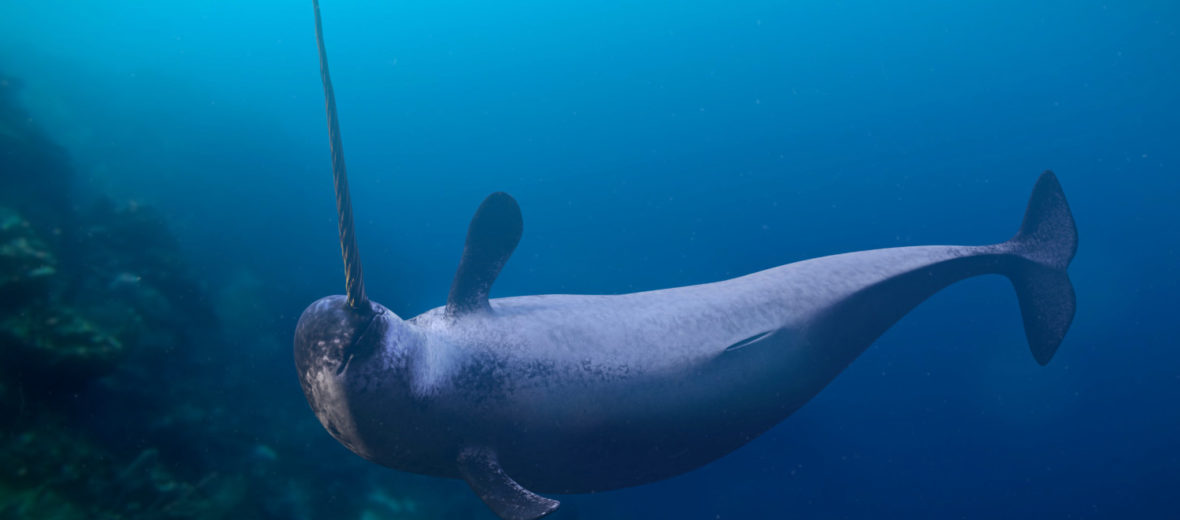
The narwhal is as strange as it is fascinating. With their long tusk that sticks out from the front of their head they roam the Arctic waters in search of food and companionship. A little known fact is that some narwhals actually have 2 tusks, but this is typically a rare sight. A narwhal’s closest relative is the beluga whale. They live in the Arctic waters of Greenland, Norway, Canada, and Russia. Fortunately, these spectacular creatures are listed as Least Concern by the IUCN.
First the Stats…
Scientific name: Monodon monoceros
Weight: Up to 2,100 lbs.
Length: Up to 17 feet, plus their nearly 10+ foot tusk
Lifespan: Up to 50+ years
Now on to the Facts!
1.) Gas and oil development as well as climate change pose the greatest threats to the narwhal’s existence. With more ships traversing the Arctic sea, there is an increased risk of boat strike and the noise from the ships also interferes with their echolocation.
2.) These unusual predators prey on polar and Arctic cod, shrimp, Greenland halibut, and Gonatus squid.
3.) Their extensive migrations take them up to 620+ miles in approximately 2 months and they follow the loose pack ice.
4.) The narwhal numbers are strong, for now, at an estimated 170,000+.
5.) Narwhals are social mammals that can roam in pods of up to 20 individuals. During mating season these gatherings can increase to nearly 1,000.
But wait, there’s more on the narwhal!
6.) So what’s up with that tusk, you ask? That tusk is actually an elongated, left-turning, helix spiraled tooth that is specially evolved to act as a sensory organ.
7.) This tusk grows in most all males and even in about 15% of females. 1 in 500 males grow 2 tusks. There has only been 1 female ever recorded with 2 tusks.
Did you know…?
Narwhals are able to dive to depths of over 5,900 feet! They can also hold their breath for around 25 minutes!
8.) The tusk is actually hollow and is riddled with millions of tiny holes. These holes allow water to enter to the base of the tusk and provide valuable information about the water around them. It is surmised that they can sense a variety of chemical changes in the surrounding water such as temperature, specific gravity (salt levels), and water pressure.
9.) They only swim up to 4+ mph. It’s ok. Slow and steady wins the race.
10.) Polar bears and orcas are their primary predators.
But wait, there’s still more on the narwhal!
11.) These wonderful marine mammals travel the farthest north of any known whale and can do so do to the blubber content of their body; a whopping 35%!
12.) And no, they don’t use their tusks to spear fish. They actually just open their mouths and create a suction to draw the prey in and swallow it whole.
Now a Short Narwhal Video!
Also, check out the Critter Science YouTube channel. Videos added frequently!
Want to suggest a critter for me to write about? Let me know here.



